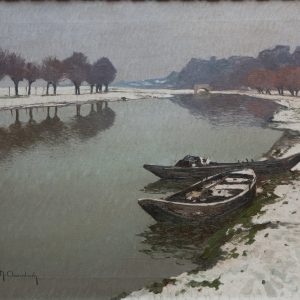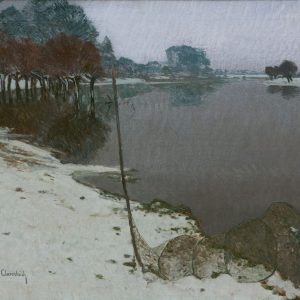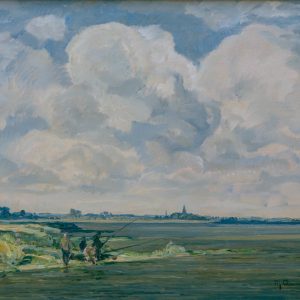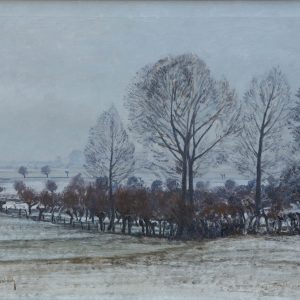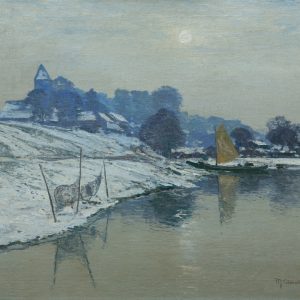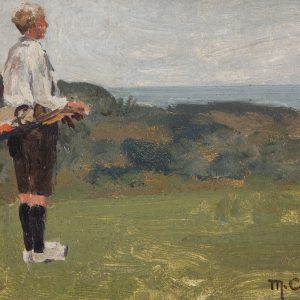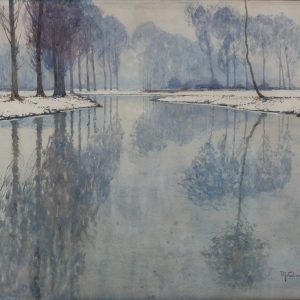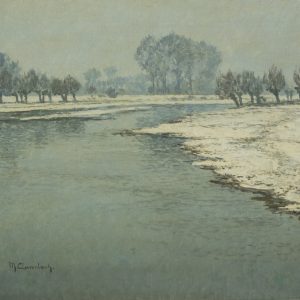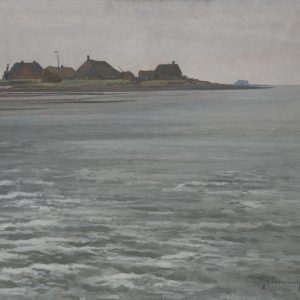
Max Clarenbach
1880 Neuss ‐ 1952 Wittlaer
Short information about the artist
Max Clarenbach is one of the most important personalities in Rhenish painting after the turn of the century.
Kunstwerke im Angebot
Verkaufte Kunstwerke
Videos about the artist
More information about the artist
Max Clarenbach is one of the most important personalities in Rhenish painting after the turn of the century.
Art Academy Düsseldorf
Coming from a poor background but gifted with extraordinary talent, he joined the Düsseldorf Academy at the age of 13 on the advocacy of Andreas Achenbach. His first teachers are Professors Heinrich Lauenstein and Arthur Kampf. Max Clarenbach soon moved up to the landscape class of Professor Eugen Dücker (1897-1901). The latter encouraged the young painter in his inclination to depict landscapes – especially the landscape of his own homeland – and taught him the principles of open-air painting.
Wittlaer
In 1901 Clarenbach rented a studio in Wittlaer, where the important architect J. M. Olbrich (1867-1908) later planned a villa for him. Equipped with tireless diligence and ambition, the 22-year-old Clarenbach achieved his first international success in 1902: “The Silent Day” (now the Kunstmuseum Düsseldorf), which earned him international recognition and the Great Golden Medal in Vienna.
Sonderbund
In 1909 he brought German landscape painting closer to the French Impressionists by founding the artist group “Sonderbund” with the painters Julius Bretz, August Deusser, Walter Ophey, Wilhelm Schmurr and the brothers Alfred and Otto Sohn-Rethel. Between 1909-1912 Clarenbach’s pictures were on view alongside Monet, van Gogh, Gauguin and Cezanne in Düsseldorf and Cologne. In 1917 Max Clarenbach inherited his teacher Dücker and became professor of landscape painting at the Düsseldorf Art Academy.
Motifs
Winter landscapes are the focus in Clarenbach’s oeuvre, today his name is almost synonymous with the artistic capture of the Rhenish winter. Along the Erft and in the vicinity of Wittlaer, Clarenbach found the motifs that inspired him throughout his life. People rarely appear in these pictorial spaces and are then fully integrated into the landscape.
Museums and collections
Clarenbach’s paintings were acquired by numerous Rhenish museums, as well as for the museums in Berlin, Mainz, Strasbourg and the Art Gallery in Buffalo (USA).
Literature
In our specialist literature we offer the book “Max Clarenbach (1880 Neuss – Cologne 1952)” for sale.
